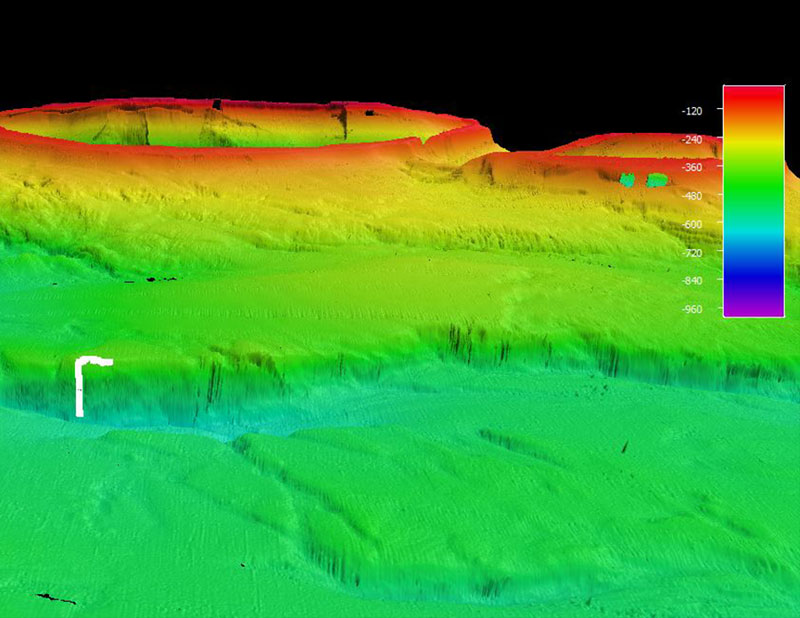-
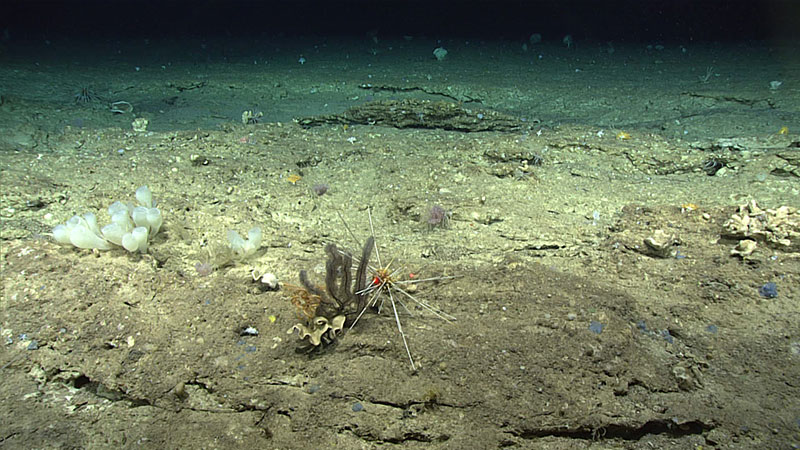
One of the most noteworthy sightings of Dive 13 was an urchin that was in the process of feeding on a black coral. Black corals are predominantly found in deep water and little is known about their basic ecology, including what feeds on them. Image courtesy of the NOAA Office of Ocean Exploration and Research, Exploring Deep-sea Habitats off Puerto Rico and the U.S. Virgin Islands. Download larger version (jpg, 1.5 MB).
-
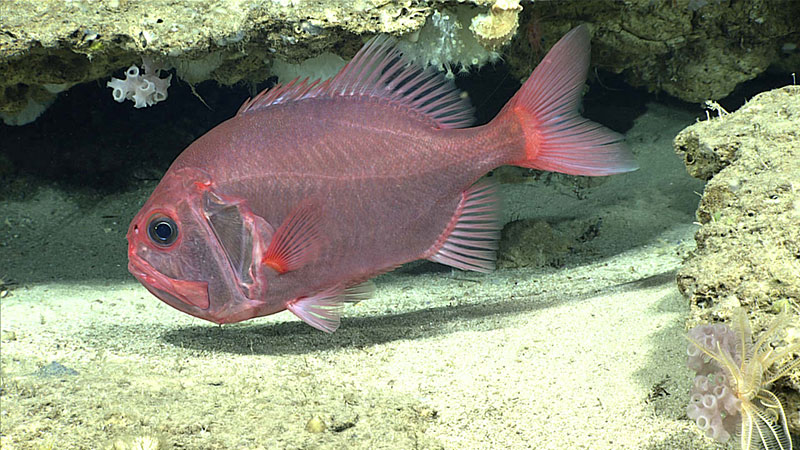
The orange roughy (Gephyroberyx sp.) was the most common fish observed on Dive 13. Image courtesy of the NOAA Office of Ocean Exploration and Research, Exploring Deep-sea Habitats off Puerto Rico and the U.S. Virgin Islands. Download larger version (jpg, 1.6 MB).
-
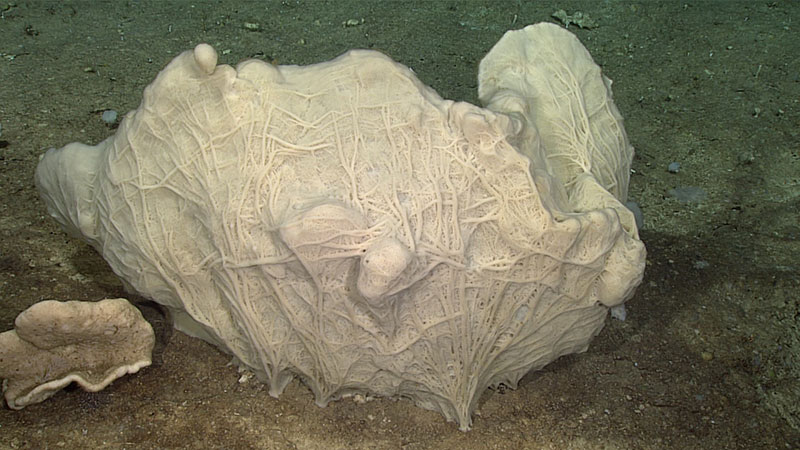
This demosponge (Phakellia sp.) was one of the largest sponges seen on Dive 13. Demosponges were the most common group of sponges seen on today’s dive. Most of these were, however, rather small in size. Image courtesy of the NOAA Office of Ocean Exploration and Research, Exploring Deep-sea Habitats off Puerto Rico and the U.S. Virgin Islands. Download larger version (jpg, 1.1 MB).
-
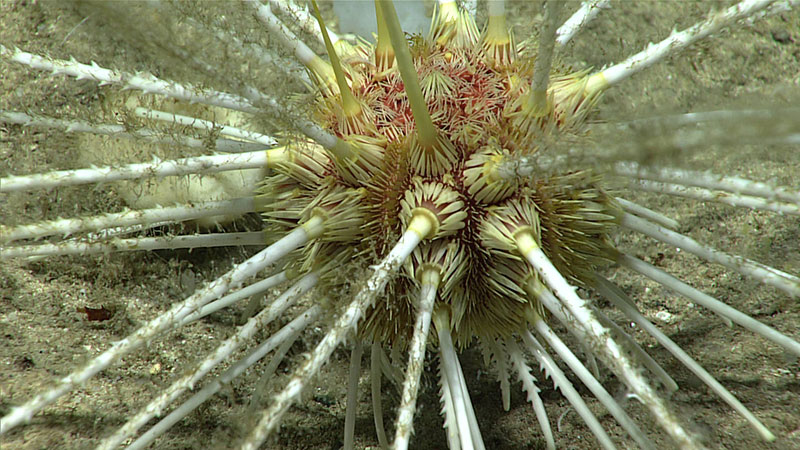
This urchin (Histocidaris nuttingi) uses its long spines for defense and for moving along the seafloor. The small hooks on the spines are used for manipulating food. Image courtesy of the NOAA Office of Ocean Exploration and Research, Exploring Deep-sea Habitats off Puerto Rico and the U.S. Virgin Islands. Download larger version (jpg, 1.3 MB).

